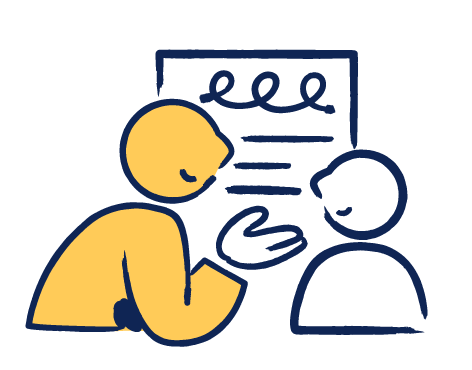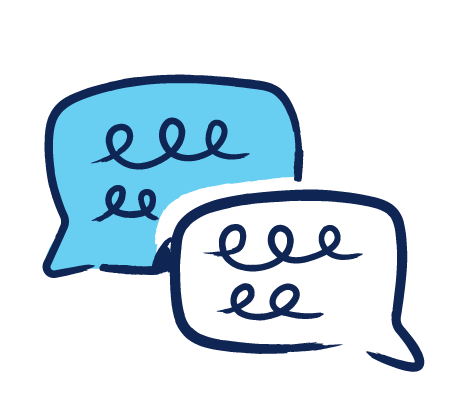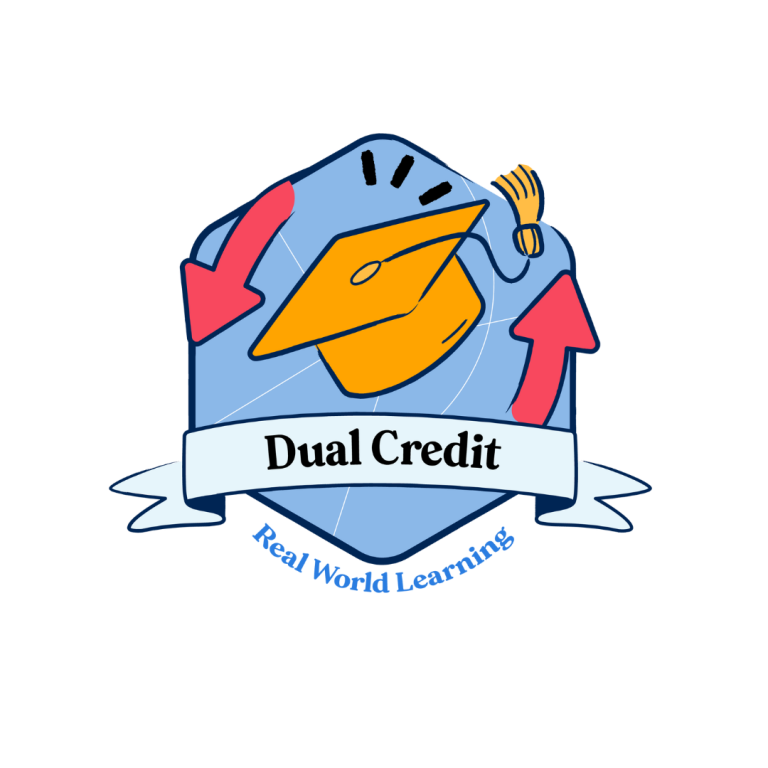
Client Connected Projects
Authentic Problems
Client Connected Projects (CCPs) are authentic problems that students solve in collaboration with professionals from industry, not-for-profit, or community-based organizations. They provide students with access to industry professionals, real-world problems, and essential skills.
Projects should require at least 24 hours of student work, with at least 4 hours of that engagement being directly with the client.
5 Key Components for Client Connected Projects (CCPs)
-
Quality Considerations
One
—Project planning documentation showing the process.
—Use of authentic methods and tools relevant to the industry.
—Viable product and/or service that is evaluated by the client.
—Work aligns with student’s course of study.
-
Student Support
Two
—The School has an RWL-informed counselor to refer students to CCP opportunities within specific courses.
—Designated school staff and/or teachers serving as facilitators/coaches for students.
-
Making it “Real”
THREE
—Engage in at least 24 hours of project work with an employer partner within a semester (or a determined multi-week period of time).
—Employer meets with students at least four times (kickoff meeting, two check-ins, and a final presentation.
-
Student Agency & Voice
FOUR
—Students request and receive feedback from professional mentors.
—Students retain some agency over the course of the project (not a predetermined series of steps).
—Students can describe their experience and the value of the achievement and be prepared to add it to their resume or LinkedIn profile.
-
Assessment & MVA Completion
FIVE
—Students complete quality client projects using problem-solving and creative thinking.
—Refer back to student outgrowths.
—Employer feedback can contribute toward the final grade.
CCP Project Prompts
Employers play an essential role in providing students with authentic problem-solving experiences. Regardless of the type of business, the following areas are great places to identify services and projects that students can complete. Below, you will find examples of experiences that students can have with employers—these can guide professional mentors in developing projects or opportunities where students can identify projects to pitch to clients.
Business Growth
Market Research
Students can perform a market analysis for specific opportunities or events for the client.
Deliverables: Students develop and submit a report with details on existing best-practice benchmarks or competitors. They can also be asked to identify key trends associated with the growth of the company or the profession as a whole,, as well as determining key drivers for its success.
Guiding Question: How might we be more successful with [insert product] or [insert demographic], and how will we know when we are performing competitively or opportunity?
Survey & Analysis
Students develop a survey and provide analysis and presentation of results.
Deliverables: Students provide a report summarizing trends, leads and opportunities for actionable interventions and strategies to consider that align with the corporate vision.
Guiding Question: How might we increase revenue or grow our business presence or impact in [specific area], and who should we connect with to do so?
Options: If successful, students could extend the initial project into a commission for deeper analysis of other collaboratively developed next steps as determined by the client host.
Prospect Research
Students research and segment existing lead lists (~100 prospects) based on previous interactions with the business, website, or through other channels.
Deliverables: Students create a database of prospects that includes contact name, company they are associated with, their title or role, and contact information (phone #, email address, etc.).
Guiding Question: How might we increase our customer or constituent base, and who should we connect with to do so?
Options: Extend project into designing a campaign or outreach strategy.
Audience Profile
Students use the client’s website, email analytics, and interviews to create an audience or customer profile.
Deliverables: Students generate a demographic report of current website visitors, creates an audience profile, and researches target audiences to better understand and offer suggestions on how the client might be of better service.
Guiding Question: How might we increase our connection to our wider audience or target populations with products and services that will convert visitors and followers into leads?
Lead Generation
Students identify 25 companies/contacts that fall under client-defined audience or customer profile.
Deliverables: Students provide a report summarizing leads and opportunities for clients to make connections (including corporate profiles, contact names, and contact email addresses) for decision-makers.
Guiding Question: How might we increase revenue or grow our business presence or impact in [specific area], and who should we connect with to move that vision forward?
Options: If successful, students could extend the project into making initial contact with leads.
Operational Support
Data Cleansing
Students can work with a client’s dataset to remove duplicates, update outdated records, ensure consistent formatting exists, and provide all-around quality control. Students can also work to ensure data quality by verifying its integrity and making sure it is complete.
Deliverables: Students extract, process, and upload information into client databases and data systems.
Guiding Questions: How might we ensure there is an accurate set of information to [connect with customers, manage processes, or report results]?
Options: Extend this to be an annual or semi-annual repeated project in partnership with the facilitator and new groups of students.
Talent Sourcing
Using a position description, students identify 25 candidates to recommend as highly qualified and deserving of consideration for a given position.
Deliverables: Students provides a brief rationale for why a candidate is being recommended, and will provide customized interview questions based on information available in candidate resume to better gauge candidate fit and alignment.
Guiding Questions: How might we find the best candidates to consider for [insert position]?
Data Insights
Students review and manipulate a dataset (sales, operations, financial, transportation, logistics, other) provided by the client.
Deliverables: After reviewing the data, students provide a summary of actionable insights that will benefit the client’s stated objectives.
Guiding Questions: How might we identify trends in [insert business area] that will help us increase revenue or grow our business?
Physical Space Design
Students may design a plan to make physical space more efficient and aesthetically appealing for customers or employees.
Deliverables: Students may conduct interviews and focus groups or develop surveys to understand the intended purpose and most optimal methods of utilizing the space. Students can produce a plan and budget for physical space enhancements.
Guiding Questions: How might we create an environment that allows our customers to better engage with our business or for our employees to to be more productive?
Options: Students can begin by serving their classroom/building/ district/community as a client!
Marketing & Customer Engagement
Event Planning
Students develop a plan to bring customers/constituents together and build connections in support of the business/organization. Establish a plan for promoting the event, attracting guests, working within a budget, and meeting engagement priorities.
Deliverables: Students create a budget and ‘Run of Show’ document outlining the details and itinerary of the event. Students develop a promotions strategy.
Guiding Questions: How might we effectively engage customers/constituents in support of our products/services/event objective?
Options: Extend the project to include producing and implementing components of the event.
Email Marketing
Students develop a series of 3-5 emails to help promote an upcoming client initiative. The emails should be structured to be sent out sequentially and play off each other to drive engagement for the client.
Deliverables: Students provide a draft and final copy including key art and hyperlinks. They can also provide recommendations on layout, call to action, and the timeline for sending.
Guiding Questions: How might we use email content to build engagement around an initiative?
Case Studies
Students create case studies for print & digital to be used for marketing purposes. Use the information provided to draft the customer’s problem, alternatives considered, why they choose us, and the impact of working with the client.
Deliverables: Students provide a final written case study that includes key art, customer quotes, and the impact.
Guiding Questions: How might we use customer impact to market our services?
Graphic Design
Design 3 to 4 pieces of marketing collateral for an event or campaign. Students will work with the client to identify information needed, medium for the finished pieces, and the audience.
Deliverables: Students provide draft artwork and incorporate client feedback into finished digital art.
Guiding Questions: How might we create brand awareness, engagement, or attendance via well-designed marketing collateral?
Customer Feedback
Students develop a plan to gather experience data from customers. They will identify potential feedback vehicles, seek responses, and identify and summarize key themes and opportunities for action.
Deliverables: Students begin by creating a strategy document for seeking feedback, then implement it. A final report will include customer responses and recommendations.
Guiding Questions: How might we use customer feedback to improve customer relations or business operations?
Options: If successful, students could extend the project and create a customer journey or customer profile.
Social Media Strategy
Students create a social media strategy proposal. The posts should have a good mix of thought leadership and informational and promotional content.
Deliverables: Students develop a social media calendar that includes 2 posts per day for a single month with recommendations on implementation and measurement.
Guiding Questions: How might we leverage social media platforms to better engage with our customers or industry?
Options: Extend the strategy to include social polls and surveys, keyword or hashtag research.
Content Creation
Students research and draft a 1,200-1,600 word blog or edit a video on a specific topic provided by the client. The content should be consistent with the client’s brand.
Deliverables: Create an outline, draft version for approval, and final blog post or video story.
Guiding Questions: How might we establish our business as an expert in [insert industry/field/topic] through written publication or short video?

